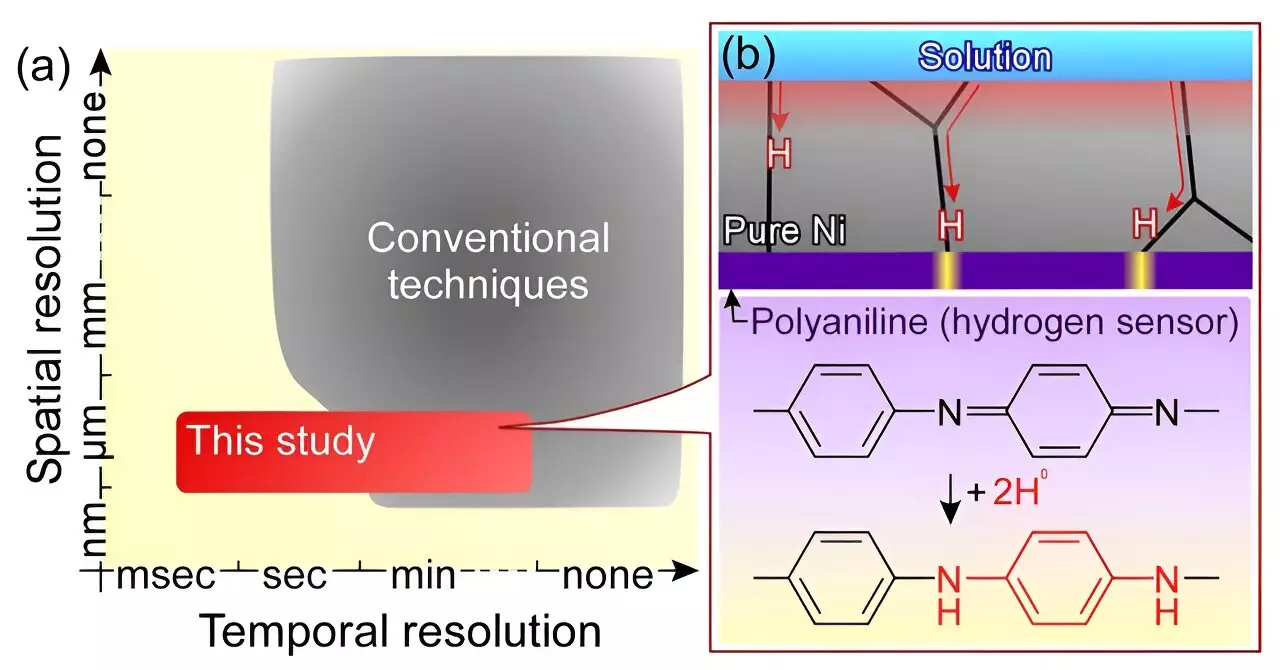The potential of hydrogen as a clean energy source has long been recognized, but widespread adoption faces significant technical challenges. To overcome these hurdles, it is crucial to develop advanced materials that can produce, store, transport, and preserve hydrogen. One key aspect in achieving this is gaining a fundamental understanding of how hydrogen behaves in alloys. Unfortunately, current technology falls short in accurately detecting and visualizing hydrogen atoms due to their unique characteristics.
Led by Hiroshi Kakinuma, an assistant professor at Tohoku University, a group of researchers has made a groundbreaking discovery by developing a simple and cost-effective visualization technique for observing the atomic state of hydrogen. Their findings have been published in the journal Acta Materialia. The team harnessed the power of an optical microscope combined with a polyaniline layer to create this method.
The researchers found that when the polyaniline layer reacts with atomic state hydrogen in metals, it undergoes a color change. This color distribution within the polyaniline layer provides valuable insights into the flow of hydrogen atoms. Kakinuma explains, “Optical microscopes offer real-time observations with microscale spatial resolution, allowing us to capture hydrogen behavior with unprecedented detail.” With this innovative approach, the researchers successfully filmed the flow of hydrogen atoms in pure nickel (Ni), with the polyaniline changing from purple to white upon interaction with hydrogen atoms.
Through in situ visualization, the group made a significant discovery regarding hydrogen diffusion in pure nickel. They observed that hydrogen atoms in Ni preferentially diffused through grain boundaries in disordered Ni atoms. Additionally, the researchers determined that the geometry of the grain boundaries played a crucial role in hydrogen diffusion, with larger geometric spaces enhancing the hydrogen flux. These experimental findings provided a clear understanding of the relationship between the atomic-scale structure of pure Ni and hydrogen diffusion behavior.
Broader Applications and Future Prospects
The new visualization technique devised by Kakinuma and his team holds immense potential beyond pure nickel. It can be applied to other metals and alloys, such as steels and aluminum alloys. This breakthrough drastically facilitates the elucidation of microscopic hydrogen-material interactions, opening avenues for further investigations through simulations. Kakinuma emphasizes the importance of this research, stating, “Understanding hydrogen behaviors in relation to the atomic-scale structure of alloys will enable the efficient design of alloys and accelerate the development of highly functional materials, bringing us one step closer to realizing a hydrogen energy-based society.”
The researchers’ innovative visualization technique utilizing an optical microscope and polyaniline layer has revolutionized the understanding of hydrogen behavior at the atomic level. This breakthrough not only furthers the development of advanced materials for hydrogen-related applications but also paves the way for a cleaner and more sustainable future powered by hydrogen energy.


Leave a Reply